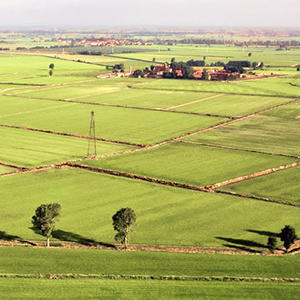Organic versus conventional farming: Medium-term evaluation of soil chemical properties

Accepted: 23 August 2022
HTML: 244
All claims expressed in this article are solely those of the authors and do not necessarily represent those of their affiliated organizations, or those of the publisher, the editors and the reviewers. Any product that may be evaluated in this article or claim that may be made by its manufacturer is not guaranteed or endorsed by the publisher.
Agricultural management affects soil fertility through the frequency and type of agronomic practices such as mechanical operations, type and rate of fertilizers, crop rotations, and residue management. This study evaluated the evolution of soil chemical properties (pH; electrical conductivity; soil organic carbon, SOC; total Kjeldahl nitrogen, TKN; and available phosphorous, PO4-P) over time in two farming systems, organically and conventionally managed, after 5 and 14 years after the establishment of both systems, in northeastern Italy. SOC content remained stable in the conventional farming system, but slightly decreased in the organic farming system, despite inputs from organic amendments. In contrast, soil TKN remained consistently higher in the organic farming system. The PO4-P increased over time, in both farming systems. Moreover, we observed that an increase of 1% in soil clay content resulted in increases of 0.0534 and 0.0053 g kg–1 in SOC and TKN, respectively. In conclusion, our results indicate that organic management does not have an advantage over conventional management in terms of soil organic matter accumulation.
Highlights
- Organic management did not increase soil organic carbon content 14 years after the system was established.
- The soil organic carbon was stable over time in the conventional system.
- Soil organic nitrogen was higher in the organic farm than in the conventional farm.
- Soil C/N ratios in organic and conventional management were <10, indicating active mineralization.
How to Cite

This work is licensed under a Creative Commons Attribution-NonCommercial 4.0 International License.
PAGEPress has chosen to apply the Creative Commons Attribution NonCommercial 4.0 International License (CC BY-NC 4.0) to all manuscripts to be published.

 https://doi.org/10.4081/ija.2022.2114
https://doi.org/10.4081/ija.2022.2114







